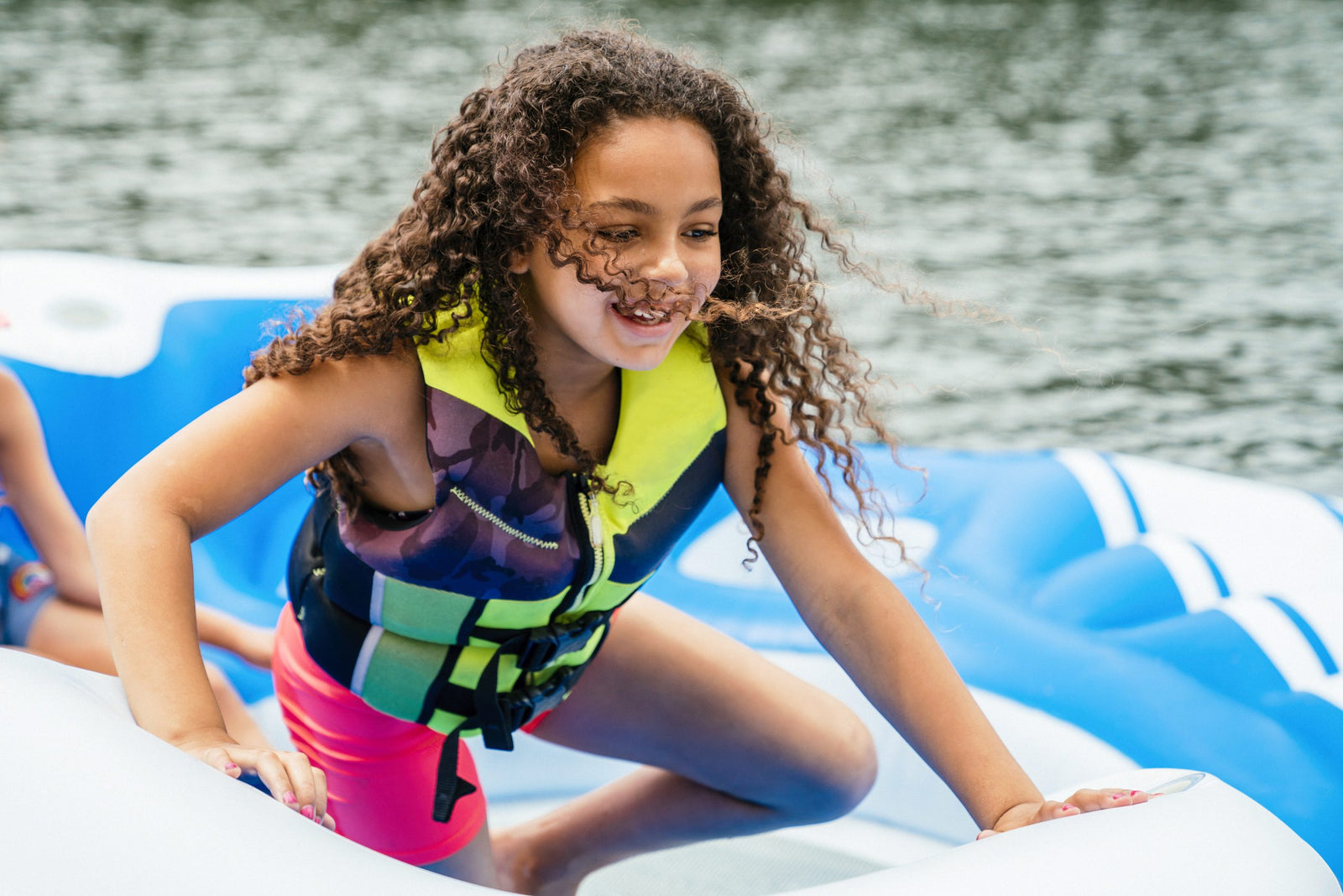

Kids’ Life Jackets — How to Ensure a Proper Fit
For many of us, there is nothing more enjoyable than a day on the water with family. Yet, for families with young kids, the dangers of boating can be a significant source of anxiety. Thankfully, there is a range of kids’ life jackets available to give you and your children peace of mind while you enjoy your day on the water. A few extra pounds of buoyancy, provided by the proper life jacket, can be the difference between life and death.
Specific boating laws will vary depending on the state, but U.S. federal law requires each boat to have one life jacket on board per passenger. Even in states where there are no child-specific laws, the Coast Guard requires children under 13 to wear a personal flotation device or PFD.
With so many types of life jackets to choose from, how do you know which kid’s life jacket is right for your child? The type of life jacket you need will depend on the environment in which you’re boating and the recreational activities you partake in. For recreational boating, the U.S. Coast Guard recognizes four classes of PFDs, each with its own purpose:
Type I PFD: Off-Shore Life Jackets
These are the most heavy-duty life jackets. They are typically used for venturing into open water, rough seas, or remote areas where rescue may not be immediate.
Type II PFD: Near-Shore Buoyant Vests
These are ideal for calmer inland waters that are more accessible to rescuers.
Type III PFD: Flotation Aids
These are for general boating or for specific activities, as indicated on the vest itself. They may be specially made for skiing, fishing, or kayaking, among other activities.
Type V PFD: Special Use Devices
These include vests made for very specific activities or conditions, and are often for commercial use. The label on the vest will indicate which activities these are appropriate for-- it may be anything from boardsailing vests to man-overboard assistance.

Once you’ve determined the type of life jacket that will be appropriate for your child, you may ask yourself: How do I properly fit a kid’s life jacket? A properly fitted life jacket is one that fits snugly on your child's body while remaining comfortable. If at its tightest the life jacket is loose or gaps anywhere on your child, it is too big. On the opposite end, if the jacket is difficult to get into, the jacket is too small. It’s important that you find the right fit for your child for two key reasons. First, a snug fit means that the life jacket won’t be able to slip off in an emergency. Second, a comfortable fit means that your child will quickly grow accustomed to wearing it, and will be more likely to keep it on and stay safe (even when you’re not looking!).
Each company’s sizing will run differently, but are generally based on chest and waist measurements. Be sure to take your child’s measurements into account, and take new measurements each year to ensure the best fit.
After selecting the size of the life jacket, do a test fit well before heading out on the water. This will allow you to exchange the jacket if it is ill-fitting or uncomfortable. If possible, do this at a swimming pool so that your child can get used to wearing it in the water, get a feel for how it works, and make any necessary adjustments to the straps.
Each life jacket will be a little bit different, but the following steps apply to most:
- Slip the jacket over your child’s head and zip the front zipper all the way up to their neck
- Fasten the bottom buckle, securing the jacket to their waist
- Tighten or loosen the jacket using the adjustment straps on either side.
- At this point, the jacket should be snug. However, if the jacket has leg straps, adjust these as an added precaution to prevent the life jacket from riding up.
- To double-check the fit, attempt to lift your child by the jacket’s shoulder straps. If the vest comes up past their chin, the jacket needs to be tighter or a smaller size needs to be purchased.
- If a pool or calm body of water is available, have your child practice floating face up while wearing their life vest. Ensure that the straps stay in place and that the jacket effectively keeps your child’s head above water.
While test-fitting the jacket, it’s a good idea to show your child how to properly fit it on themselves. Explain each step as you go to ensure that, should a dangerous situation arise where you are unable to help them, they can secure themselves with confidence.
Keep in mind that children are more prone to panic if they fall into the water suddenly. A common reaction is for them to violently wave their arms and legs. This has the potential to further endanger your child; even though the PFD will keep them afloat, it may not keep them face-up if they are panicking in the water. It is therefore essential that your child understands the importance of staying calm in the water and is supervised at all times.
Please note that the U.S. Coast Guard warns against the dangers of bringing an infant onboard a recreational boat. It is essential that infants under 18 pounds have their life jackets carefully tested and fitted in a calm pool setting to ensure maximum safety. However, in a dangerous real-life scenario, it can be nearly impossible to predict how well the PFD will work.
A final tip: Set a good example! If your child sees you wearing a properly fitted life vest and taking safety seriously, they will feel much more confident and take safety seriously as well.












